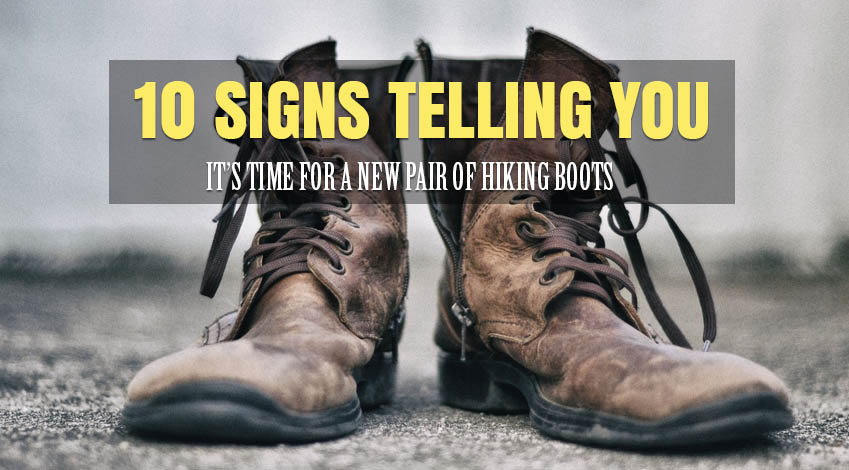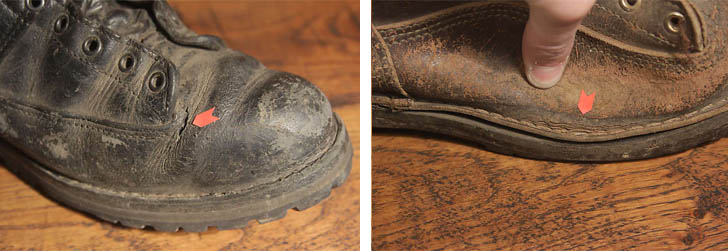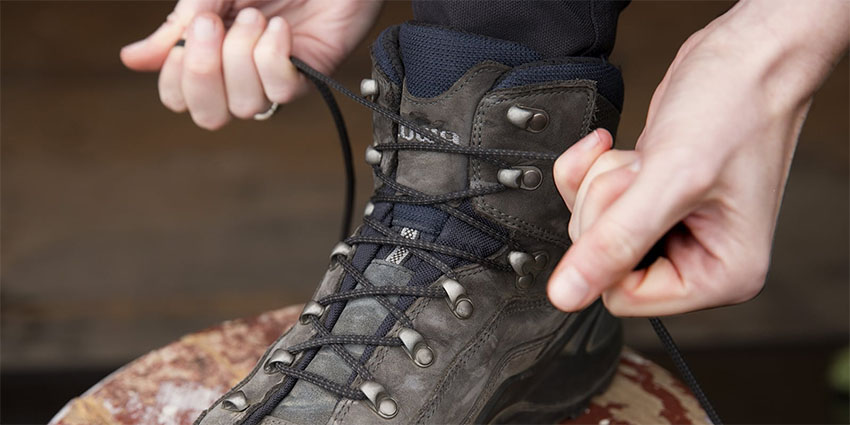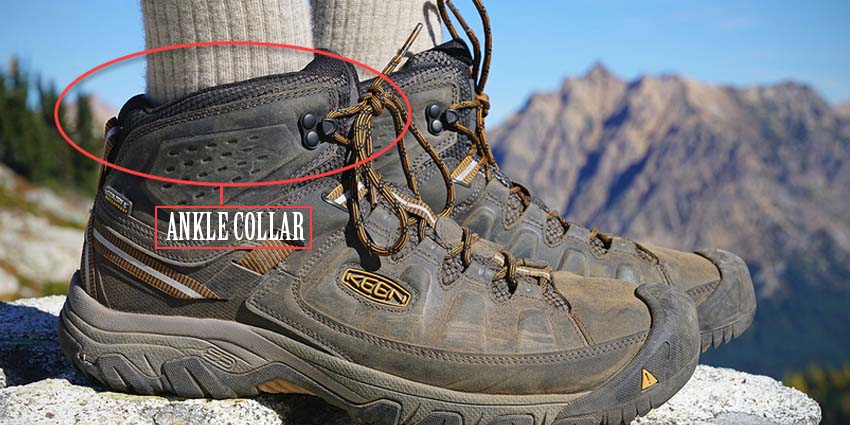
Hiking is a challenging and rewarding activity, no matter if you’re an entry level or experienced hiker. Many aspects will play a role in having the best hike every time, from wearing the proper clothes to the best hiking boots. You cannot control many things while hiking, which is why handling your equipment becomes essential for the success of your hike.
Hiking boots can give you speed when you need it, hold you in place if you’re slipping, and keep your feet dry after you stepped into a puddle. If you’ve been wearing your hiking boots/shoes for a while now, you know that you may have to buy a new pair after some time. But how do you know that you need to purchase new hiking boots? We took a closer look and provided you the details you watch out for on your hiking boots.
1. Looks
Always check your boots in and out before hiking, to make sure that they don’t break in the middle of the day. All shoes will eventually show wear and tear signs, but hiking boots present a higher risk as dirt, grime, and extreme conditions will affect them.

Even if too much grime or dirt doesn’t seem much, they may decrease the breathability of your boots, reducing your comfort. Any cracks, tears, or rips of the upper of your footwear are also signs of worrying. They affect the structural stability of the boots and cause various problems.
Once the stitching of the upper/around the sole is separated or frayed, it’s time to replace your footwear. Damaged stitching reduces the waterproofness of your boots, rending them unreliable and unfit for hiking.
If you’ve been using boots for a while, you will be able to see if the shape has changed in time or not. While adjusting to your feet’ shape is normal and desirable, boots that become flatter, deformed, wider, or lopsided are a terrible choice for hiking. Misshapen hiking footwear can alter your stability, increasing the risk of falls and injuries.
When your boots start showing that they’ve worn out, you should look for the next pair of boots.
2. Laces, eyelets, and lacing loops

Worn out or frayed shoelaces may occur even on your dress shoes, let alone on hiking boots. Pulling, tugging, loosening, or picking the shoelaces wears them out and even cause breaking. It’s effortless to replace the shoelaces, but worn laces could signal that your boots are worn out too.
Don’t forget to take a look at the eyelets and the lacing loops. Bent, starting to pull from the leather, or missing eyelets won’t allow you a snug fit and even cause injury. It’s more problematic if you’re using high-top boots as you will lose the ankle support.
3. Ankle collar

Hikers using mid/high top hiking footwear, should also check the ankle collar of their boots. If the collar shows signs of wear, lost the shape and the padding, or cracks on the inside, you should replace the footwear.
It’s also worrying when synthetic material covering the inside of the boot rubs away or gets separated, showing the fabric underneath.
4. Insoles

Typically made of EVA foam, insoles are essential for the padding and support inside the boots. When they are worn out, you lose comfort, and hiking becomes a painful experience.
It’s normal for insoles to wear out after some time, but you shouldn’t postpone buying new boots when you see hairline cracks in the insole. Worn/misshapen arch support or worn-out heel point are also signs that you need other hiking boots.
Always check the insoles so that you reduce the risk of blistering, as worn out insoles cause rubbing and friction a lot.
5. Midsole
The midsole is essential for the overall footwear comfort. It comprises the padding absorbing the impact on joints, such as knees, feet, hips, and ankles.
The midsole will lose its abilities in time, and can even crack/break apart because of the compression lines formed with long time wear. After some time, it becomes uncomfortable to wear the boots, as the midsole may get separated from the tread and make you spill.
You shouldn’t ignore midsole defects, and the press test is an excellent way to see if the midsole is still complete or need new footwear.
The press test
As you wear the boots, the midsole gets thinner and offers less support. You may check the midsole’s compression ability by placing the thumb against the thread pattern on the boot’s bottom, pressing into the midsole upwards.
You have to take a look along the side, checking the compression lines. Little rebound in the boot and heavy lines tell that you need new hiking boots. New shoes have no compression lines, or they’ve very difficult to notice.
6. Tread
You can skip many things on your hiking boots, but traction isn’t one of them. Hiking footwear has various tread patterns, and you have to choose your shoes depending on the kind of hiking. Most hiking boots come with moderate to deep treat pattern so that you have sufficient grip and traction on all trails, no matter the weather conditions.
Your body type and hiking pattern will make the tread wear out differently on different areas of your boots. A hiker with a pronate walk will have the big toe’s side more worn out than the middle/outer space of the shoe.
Wear patterns are an excellent sign to tell if you need new hiking boots or not. Make sure you spend time and give the treads a good look.
7. Comfort
No matter how great your hiking boots, they’re useless if they’re not comfortable. Once your footwear doesn’t feel comfortable anymore, you should consider getting new ones. Any sudden pains and aches in your back, feet, ankles, knees, or legs, but also blistering/chaffing in unexpected areas, are obvious reasons to get new boots.
8. Waterproofing

Waterproofing of the hiking boots is popular amongst hikers. When your waterproof boots begin leaking or seem to be less useful than before, your shoes may need replacement. Reliable manufacturers offer a limited waterproofing warranty, so it’s not unusual for your boots to lose the waterproofing.
However, if the boots still look fine, you may start using a waterproofing spray for expanding their durability. But it’s only a matter of time until you have to start shopping for hiking boots once again.
9. Mileage
People working in shoe manufacturing recommend replacing your hiking boots every 3-6 months, or every 350-500 miles. It’s just a general recommendation, like weather conditions, type of hike, and other factors that will impact how your boots wear out.
The terrain you’re using on the boots is mandatory for your hiking boots’ durability, with trail walking being more forgiving than pavement. How often do you wear shoes on rainy days? Do you avoid inclement weather or not? These factors will affect the durability of hiking footwear a lot.
The weight of your gear also matters, as too much weight will put a lot of pressure on the midsole, which only shortens the boots’ lifespan.
10. Comparison
If you’ve been wearing your boots for a while, you may have forgotten how new footwear feels like. Look for some shoes similar to your current boots and compare the two in terms of comfort and support. When you run over a pair of comfortable hiking boots, it’s not a bad idea to buy them. It’s only a matter of time until you have to purchase them anyway.
One last piece of advice
Tough, reliable, waterproof hiking boots are great for hiking, but they should always be comfortable. No matter if you are a newbie or an experienced hiker, you should hesitate to upgrade the current hiking boots. After all, you do want to have the best hike every single time you go out there.








